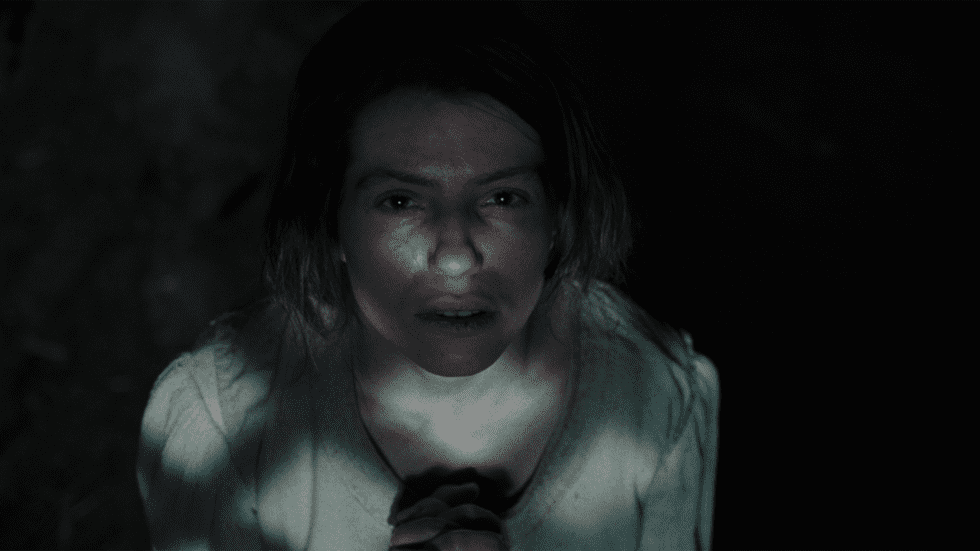
Austrian directing duo Veronika Franz and Severin Fiala – the pair behind nerve-shredding horror flicks like The Lodge and Goodnight Mommy – return with an unrelenting watch, The Devil’s Bath.
The Devil’s Bath is set in 18th century Austria and follows Agnes (Anja Plaschg) – a woman who’s about to marry Wolf (David Scheid). However, her vision of marriage is broken by persistent judgement from her mother-in-law, Wolf’s lack of interest towards her, and the condemning eyes of those around her. As Agnes becomes more isolated and struggles to escape growing depression, she falls deeper into a gutting state of utter devastation. Eventually, her grip on reality loosens so much that she finds herself going to grave lengths to end her despair.
The Devil’s Bath, like Franz and Fiala’s previous works, is bleak in its nature nor is it for the faint of heart. It’s more akin to the grounded, mean-spirited, and dreary tones of a Bryan Bertino flick – like The Strangers or The Dark and the Wicked – and almost feels like it’s vacuuming your soul out of you as it goes on. Now, that obviously means that The Devil’s Bath isn’t for everyone. But, even for someone who genuinely loves horror, this is a tough recommendation. Franz and Fiala pull absolutely no punches in delivering brutally visceral moments. Things can get real bloody, unforgiving, and downright cruel for Agnes, and it might go a little too far in all-out punishing its characters.
Seriously, there’s no fun to be had here and you’ll leave absolutely gutted and hollow.
Still, the film’s brutality isn’t without a sense of purpose – largely thanks to Franz and Fiala’s dedication to unearthing an unseen perspective. As explained in some text in prior to the film’s end credits, Agnes’ story represents this concept of “suicide by proxy” – where someone would commit a death-worthy crime to avoid eternal damnation by suicide. While this might sound archaic, Franz and Fiala make their depiction of this an incredibly relevant mental health story for modern audiences.
The way outside pressures creep in and consume Anges’ life not only creates palpable claustrophobia, but it also builds Agnes’ arc excellently. Despite the early parts of Agnes’ marriage to Wolf feeling like this big step forward in her life, the dreamlike nature of her mindset slowly dissolves overtime. The more her mother-in-law passes harsh rebukes towards her and her family becomes more distant, Agnes is left feeling isolated and without support. Not to mention, there is a daunting religious ideology that towers over everyone and creates a paranoid tension within the community. Every action or idea that doesn’t follow in the words and vision of God is immediately scrutinized by all – leading to awful remarks that make Agnes feel worse when things start to fall apart.
As the film shifts more into its bleakness and Agnes’ inner concern takes a destructive form, Franz and Fiala’s horror aesthetic and vision really go into motion. Just like they did with The Lodge, these two craft an opening that immediately puts you on edge and emphasizes how this film isn’t afraid to showcase pure depravity. Seriously, it’s a doozy and the film’s grounded horror only makes things more unsettling once Agnes’ grip on reality starts to slip. It’s absolutely horrifying to see the Church’s view on suicide be depicted in a disturbing manner through stunning effects and haunting imagery of what happens to those who commit suicide. We even get a glimpse at some of the more barbaric ways mental health was perceived and handled – further adding to the grueling physicality the film offers. The psychological aspects of Agnes’ descent are just as mortifying, and there’s a good mix of well-executed jump scares and slow-building terror that blur the lines of reality.
Then, at the center of it all is an impeccable performance from Plaschg that deeply evokes the film’s themes and emotions every step of the way. She perfectly showcases this gut-wrenching arc that sees her travel down the darkest parts of herself and what’s left is genuinely scary. There’s a scene in the film’s final stretch that defines how broken Agnes becomes and it’s absolutely mortifying to see her so distraught and destroyed. She’s left a hollow shell of herself and Plaschg gives it her all when it comes to tapping into the very real horror and heartbreaking distraught of Agnes’ journey.
Yet, the horror of Agnes’ arc isn’t solely shock value and carries gripping emotional threads that audiences will feel long after the credits roll. Agnes’ story is a powerful look at where a lack of empathy and support can lead someone, and the dark places that exist within our mind. It’s a stark depiction of depression that carries genuine weight and because viewers are so entrenched into Agnes’ perspective, they’ll have an understanding of why she goes through this downward spiral. The ending sequence is particularly impactful for how it creates a sick and twisted view of a community’s complacency to outcast people, and it’s why the film’s mental health aspects play into current discussion so well.
The Devil’s Bath takes Franz and Fiala’s distinct horror vision to new levels of craftsmanship. Through their unforgivingly bleak vision – which might be too much for some to bear – they achieve a thoroughly harrowing experience that’s bolstered by meaningful mental health themes, a can’t miss performance from Plaschg, and inescapable nightmares that hit close to home.

